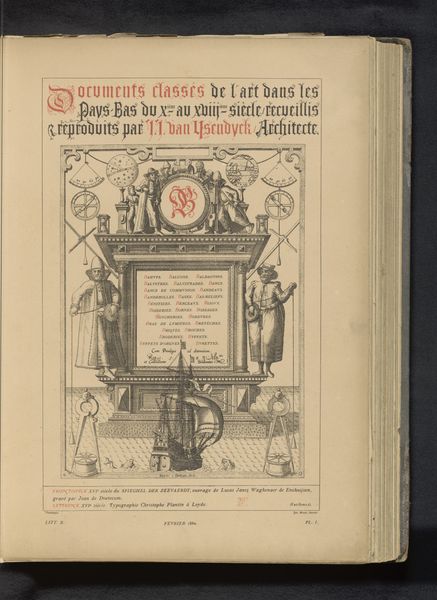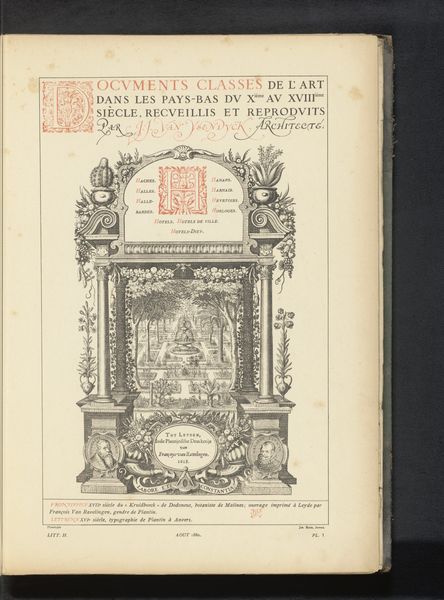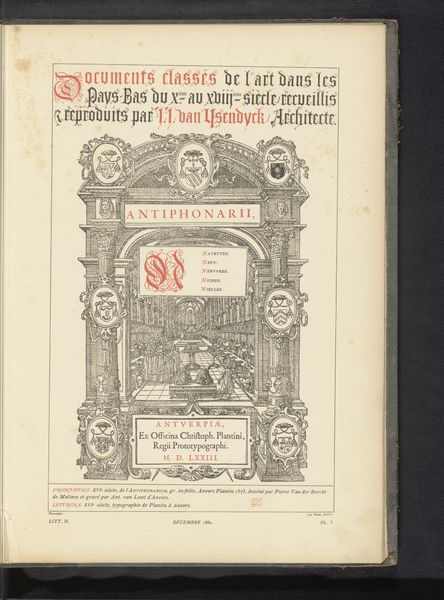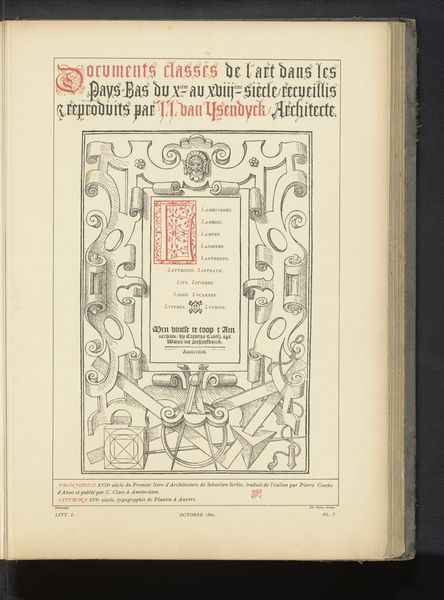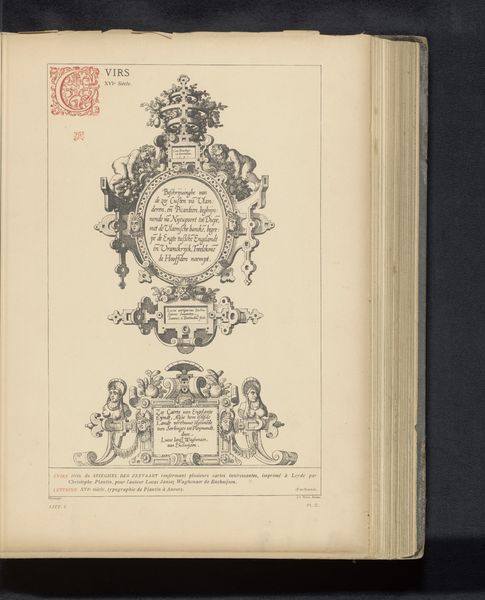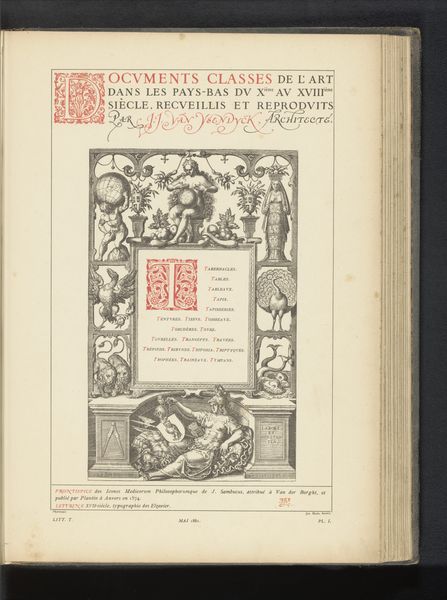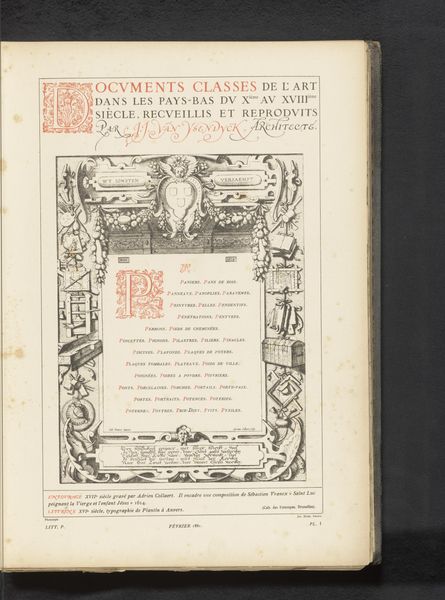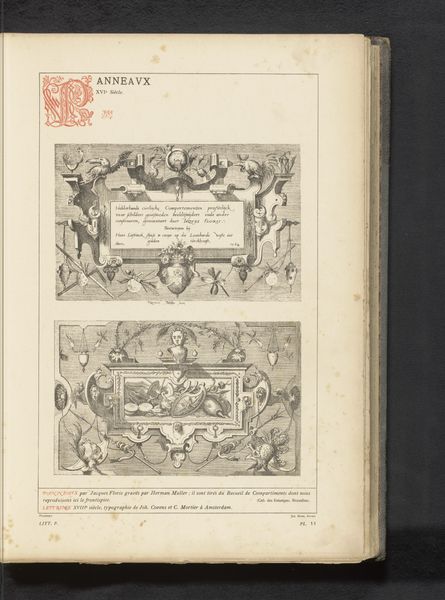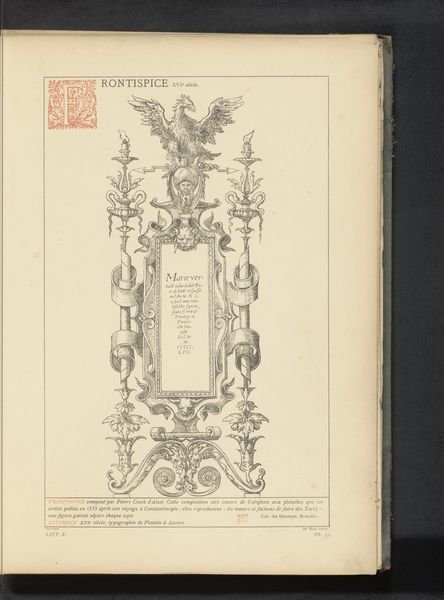
Reproductie van een titelpagina uit de Sicilia et magna Graecia met een vooraanzicht van een tempel met Neptunus en Diana, door Hendrick Goltzius before 1880
0:00
0:00
print, engraving
# print
#
figuration
#
ancient-mediterranean
#
history-painting
#
engraving
Dimensions: height 285 mm, width 194 mm
Copyright: Rijks Museum: Open Domain
Editor: So, this is "Reproductie van een titelpagina uit de Sicilia et magna Graecia met een vooraanzicht van een tempel met Neptunus en Diana" by Hendrick Goltzius, a print dating from before 1880. It has this very classical, imposing feel. What do you see in this piece? Curator: I see the deliberate revival of antiquity filtered through a decidedly early modern lens. The temple facade, Neptune, Diana – these are all familiar symbols, but their reproduction as a title page signals a pointed engagement with the past. How do we understand the motivations behind showcasing these classical figures at this moment in history? What identities, or stories is this frontispiece selling, so to speak? Editor: I see that it is selling classical architecture and ideals, of course! Perhaps a return to those 'pure' aesthetics? Curator: Yes, but for whom, and with what effect? The prominent display of Greco-Roman imagery often coincided with specific power structures. Who has access to this knowledge and how might that access reinforce existing hierarchies? Editor: That's interesting, the idea of it being almost… exclusionary, even back then. The images themselves may have seemed radical during their time. I guess it reminds me of contemporary debates about representation and cultural appropriation in art. Curator: Exactly. The relationship between the art of the past, and its reinterpretation and recirculation speaks volumes. Think about who is missing from this classical scene, and how that absence shapes our understanding of beauty, power, and even knowledge itself. Editor: So, it's not just about appreciating the artistry, but also critically examining its cultural impact and who benefits from the narratives it perpetuates? Curator: Precisely. Engaging with art like this engraving demands a rigorous interrogation of its history, and of our own position in relation to that history. And through it, a better and honest view of what may be hidden.
Comments
No comments
Be the first to comment and join the conversation on the ultimate creative platform.
